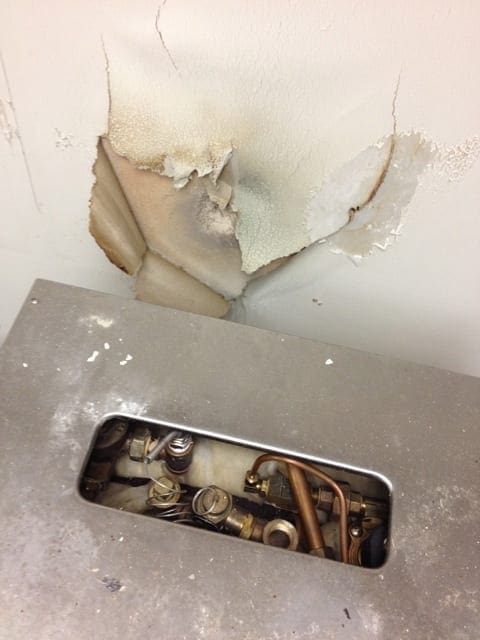Your Autoclave’s HVAC Impact
By: Priorclave North America
Category: Lab Design

An autoclave can have a major impact on your building’s heating, ventilation, and air conditioning (HVAC) system and indoor air quality. Occasionally, it’s a catastrophic impact. That was the case with this improperly vented steam autoclave

(One of our installers came across this heartbreak at a Midwestern American university back in 2014.)
Even when there isn’t a critical failure like this, an inefficient autoclave will always disproportionately contribute to building loads. That strains your HVAC system.
With a little math and a few specs from the manufacturer website, you can quickly compare the baseline load an autoclave will put on your HVAC system. This can save for from a decade stuck with a steamy monster making your lab into a sauna.
Why Watch HVAC Load?
First and foremost, an overloaded HVAC system is going to mean uncomfortable building occupants and high energy bills.
Every steam autoclave is, essentially, a hot damp box. You’re going to need a heftier HVAC or ventilation system. Without having some sense of the HVAC load of your autoclave, it’s going to be hard to properly scale that HVAC system.
Those committed to “green” building practices and LEED building design principles take note. Efficient HVAC engineering is richly rewarded under LEED. Reducing the HVAC load also makes it easier to earn points in the Indoor Environmental Quality “Thermal Comfort” credits. That’s because these credits focus on the control, design, and verification of HVAC systems. If your HVAC system doesn’t have to fight a jacketed autoclave’s external steam generator, it’s going to be easier for occupants to meaningfully control the workspace.
How to Calculate Your HVAC Load
HVAC load is a result of the autoclave’s “heat emission” (measured in kilowatts per hour). You can readily calculate this prior to purchase. In general, the thermal load placed on your HVAC by an autoclave is approximately one third of the total heater power for the unit’s first hour of operation.
To calculate an autoclave’s heat emission (when started from cold), use the following formula:

Where:
- Y = heat emission kW/hour
- X = the in-chamber heater’s power rating in kW
- h = heat-up time in hours
- p = process time in hours
- t = total cycle (i.e., until the thermal lock releases and the door may be opened) in hours
Bear in mind that the output from the autoclave varies throughout the cycle. Nonetheless, this figure is a good guide for a thermal load calculation. (If you’re using house steam, you can look up the wattage of the corresponding electrically heated autoclave. A calculation based on that wattage will give a good approximation of the thermal load.)
For Priorclave autoclaves, you can rely on the following chart for the values to plug into your calculation. For other manufacturers’ models, look for the data sheets on their website before starting your calculations.

It bears noting that the calculated heat emission for any autoclave is always proportional to the power rating for its heating element (listed in the second column of the chart).
Many aspects of Priorclave’s autoclave design (such as cold idling and in-chamber heating) significantly mitigate thermal impact because they allow us to use much smaller heating elements with the same results.
(Cold idling also benefits the LEED conscious lab owner, as occasional—rather than 24/7—operation both reduces the heat load in the lab and paves the way for several of the credits within the “Indoor Environmental Quality” category.)

